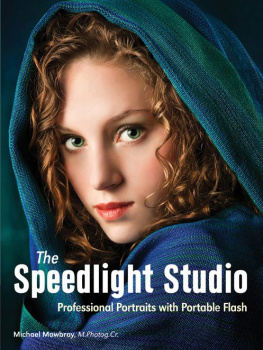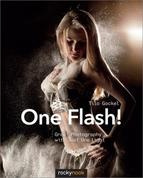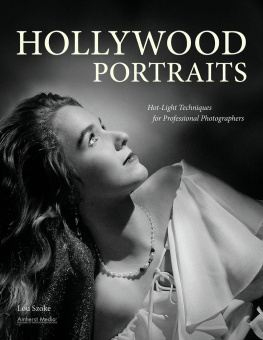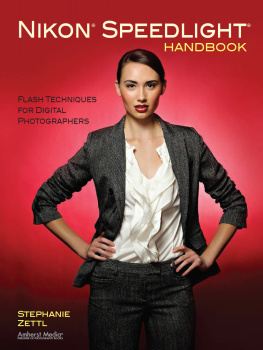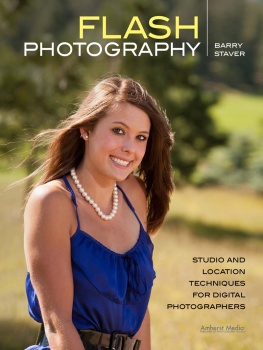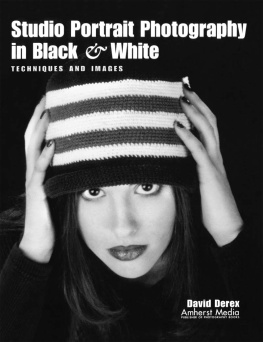
About the Author

Photograph Krystal Lamberty.
Since opening Beautiful Portraits by Michael in 2001, Michael Mowbray (M. Photog, Cr.) has gone on to win many awards for his portraiture and was named International PPA Photographer of the Year Gold Medalist in 2011 and Bronze Medalist in 2012 and 2013. He has had the highest scoring wedding portrait in Wisconsin seven times, including Wisconsin Best of ShowWedding in 2007, 2008, 2009, 2011, 2012, 2013, and 2014. He has won the prestigious Kodak Gallery Award five times and the Fuji Masterpiece Award for Outstanding Wedding Portraiture three times. Michael has also been named one of the top ten photographers in Wisconsin multiple times. He has earned both his Master Photographer and Photographic Craftsman degrees from Professional Photographers of America (PPA), and speaks around the country on the topics of weddings, seniors, and speedlights. See more of Michaels work at his consumer website, www.beautifulportraits.com. His website dedicated to photography education can be found at www.michaelmowbray.com.
Copyright 2015 by Michael Mowbray.
All rights reserved.
All photographs by the author.
Published by:
Amherst Media, Inc.
P.O. Box 586
Buffalo, N.Y. 14226
Fax: 716-874-4508
www.AmherstMedia.com
Publisher: Craig Alesse
Senior Editor/Production Manager: Michelle Perkins
Editors: Barbara A. Lynch-Johnt, Harvey Goldstein, Beth Alesse
Associate Publisher: Kate Neaverth
Editorial Assistance from: Carey A. Miller, Sally Jarzab, John S. Loder
Business Manager: Adam Richards
Warehouse and Fulfillment Manager: Roger Singo
ISBN-13: 978-1-60895-828-3
Library of Congress Control Number: 2014944598
10 9 8 7 6 5 4 3 2 1
No part of this publication may be reproduced, stored, or transmitted in any form or by any means, electronic, mechanical, photocopied, recorded or otherwise, without prior written consent from the publisher.
Notice of Disclaimer: The information contained in this book is based on the authors experience and opinions. The authors and publisher will not be held liable for the use or misuse of the information in this book.
Check out Amherst Medias blogs at: http://portrait-photographer.blogspot.com/
http://weddingphotographer-amherstmedia.blogspot.com/
Contents





E ver wonder if speedlights could work for lighting everything at your studio? I asked myself that very question several years ago. As a creative and technical challenge, I was determined to find the answer. And the answer? A resounding Yes! I now use speedlights for 99.9 percent of my lighting workin the studio and on location, on-camera and off-camera. Everywhere. As primarily a senior and wedding photographer, I have found that speedlights fit my working style to a tee.
The funny thing is, I own a complete set of studio lights that are now sitting in the closet gathering dust. As Ive built my lighting style around the mastery of speedlights, Ive found that my work has gotten better; Ive crafted a unique style, my sales have increased, and my workflow has gotten simpler. Plus, Ive gotten my evenings back in the summer! I now schedule my senior portrait sessions between 10AM and 6PM because I no longer chase light, I create it. And I no longer fear the sun, I embrace it.
In this book, I will show you how to set up a completely speedlight-based studio. I will go in depth regarding gear and techniques, with scores of example portraits and lighting diagrams. I make it easy for you to follow along and replicate the portraits that I show. In fact, if you skip over the speedlight-specific sections that open this book, it could be used as a guide to set up any type of strobe-based studio lighting system.
Ive crafted a unique style, my sales have increased, and my workflow has gotten simpler.
Throughout the book, I use the words speedlights and flashes interchangeably; both terms refer to the common battery-powered flashgun that fits into the hot shoe on your camera (though I prefer to set mine free to roam the countryside). My current cameras of choice are the Canon 5D MKIII and 5D MKII, and the primary flash model used to create the vast majority of images in the book is the Canon 580EXII. You do not need to exactly replicate the gear I used to create these images; Nikon gear works just as well, and non-name brand flashes (Im partial to the Godox/Neewer 850 and the Nissin Di866 II) can also give you a lot of the same features and bang for your buck.
Hopefully, you can use this book as inspiration to jump-start your speedlight portraiture!
I ts an exciting time to be a speedlight photographer! So many new speedlight options have been introduced in the past couple of years, from the revolutionary 600EX-RT flash from photography powerhouse Canon, to many intriguing offerings from third-party manufacturers like Godox, Phottix, Nissin, and YongNuo. In fact, those so-called off brands are beginning to pressure Canon and Nikon by offering feature-packed flashes that rival the name-brands at a fraction of the price. This should lead to a more competitive marketplace as new purchasing options abound. Ideally, this will drive down the price of the Canon and Nikon speedlights. It will be interesting to see how this plays out over the next couple of years. In any event, theres never been a better time to transition to a speedlight-based studio!
I have found that there really is very little that speedlights cannot do in a studio or location lighting environment.
In this section, I will delve into the good, the bad, the ugly, and the beauty of speedlights. As we move to the next section, Ill include brief overviews of the top speedlight offerings in the market as of this printing. (For reviews of subsequent models, visit my website for professional photographers at www.michaelmowbray.com.) Throughout the book, I will focus primarily on speedlights that have at least some level of advanced functionality, such as TTL (through the lens metering compatibility), remote power adjustment, and/or off-camera slave functionality (via radio and/or optical or infrared signals).
Speedlights arent perfect. But then again, neither are those multi-thousand-dollar Profoto lighting systems favored by many commercial and fashion photographers. Having worked with many different artificial lighting systems myself, however, I have found that there really is very little that speedlights cannot do in a studio or location lighting environment.
Truly, the only place I see speedlights coming up short is in situations where one needs a ton of light delivered conveniently. For example, I certainly can stack eight speedlights together to match or exceed the output of one AlienBees 1600but how convenient is that? And if my eight speedlights were all Canon 600 EX-RTs, at $500 each that would run $4000 versus the $600 for an AlienBees 1600, plus a Vagabond mini battery to make it portable. On the surface, in this pure power comparison, the speedlights do not make sense. But... what if you already own the eight speedlights? Perhaps you are a wedding photographer and have that many to cover a two-photographer team with both on-camera and off-camera flashes as well as having several backups. In this case, would it make economical sense to purchase the AlienBees 1600 and battery? Perhaps not. Its an argument that I often face when championing speedlights (and one I often have with my buddy, Dan Frievalt, just for fun).
Next page
